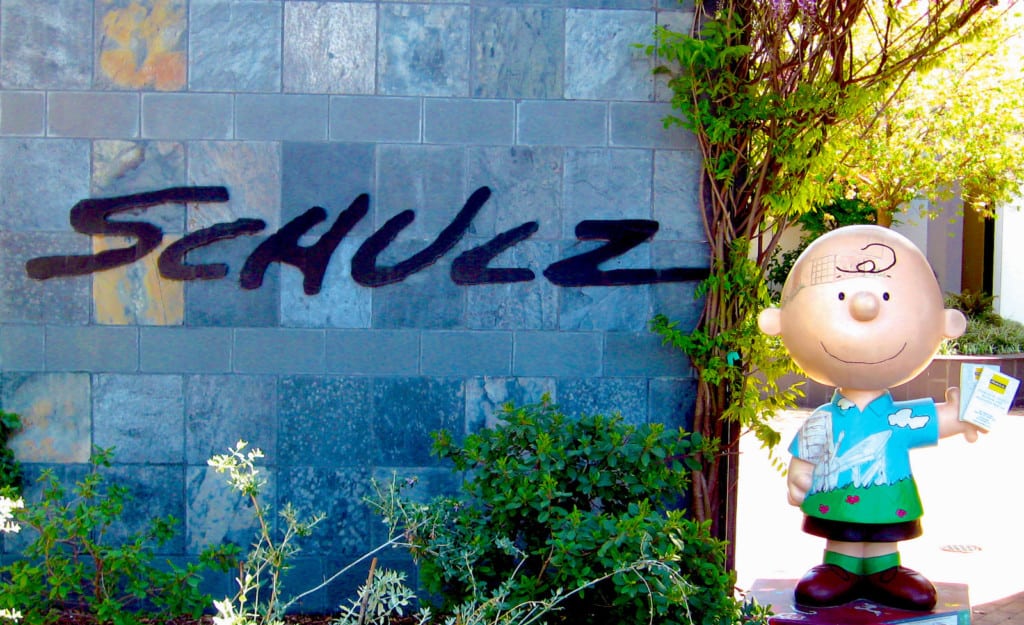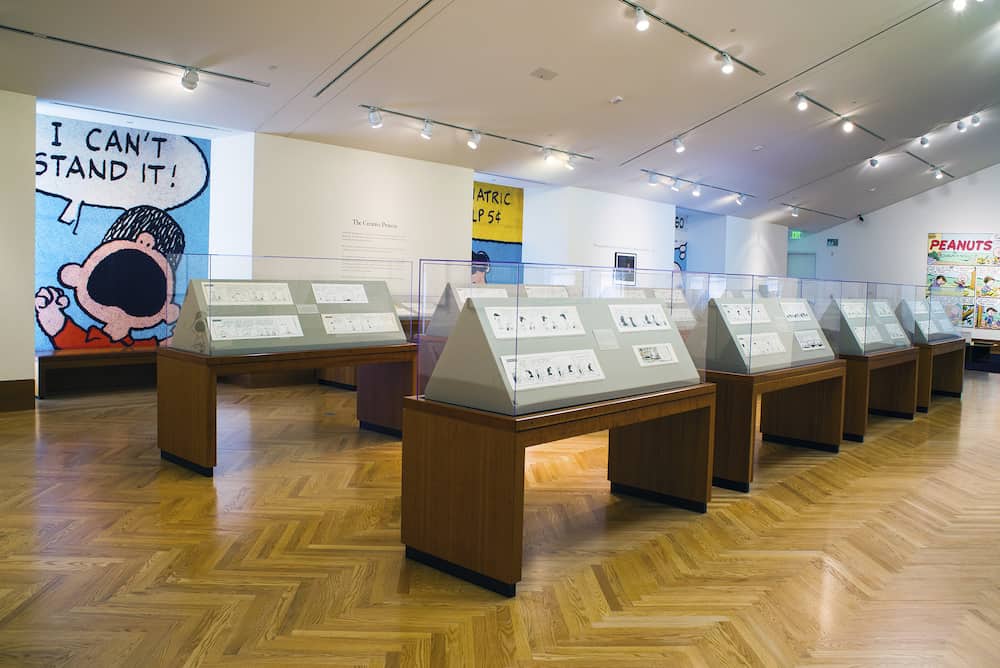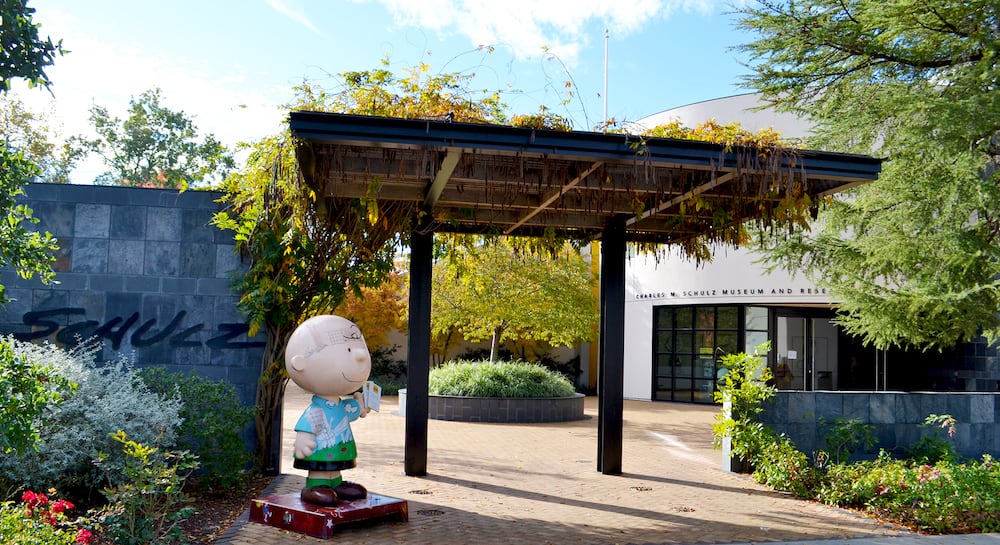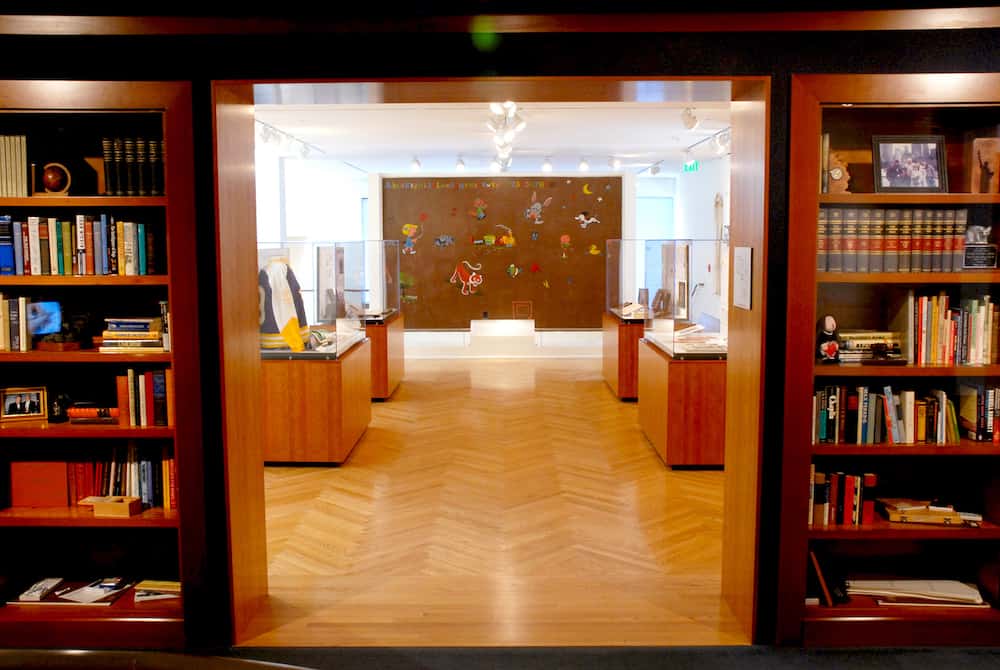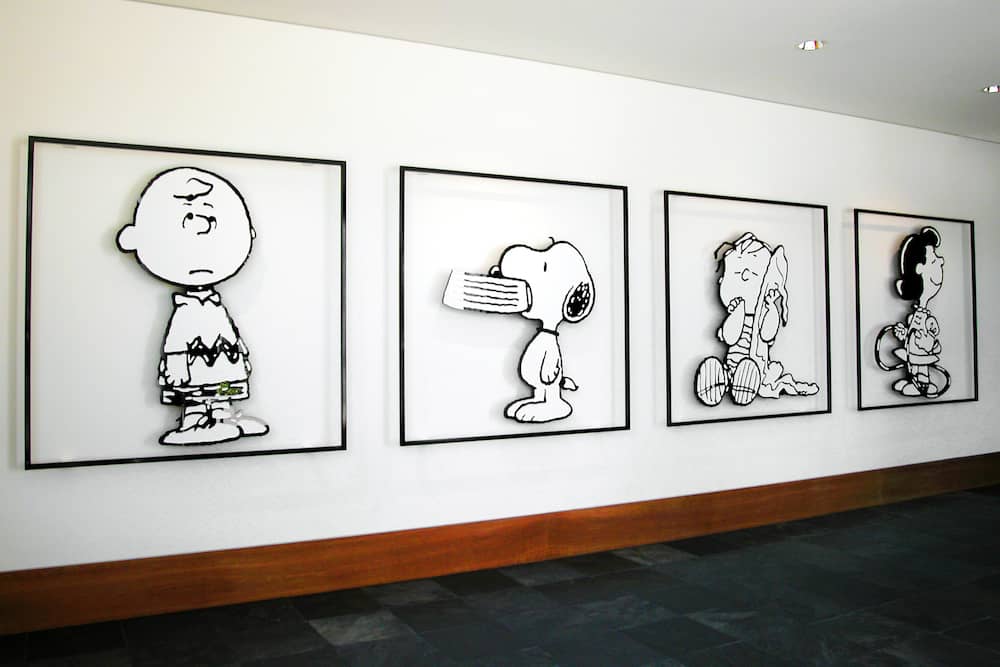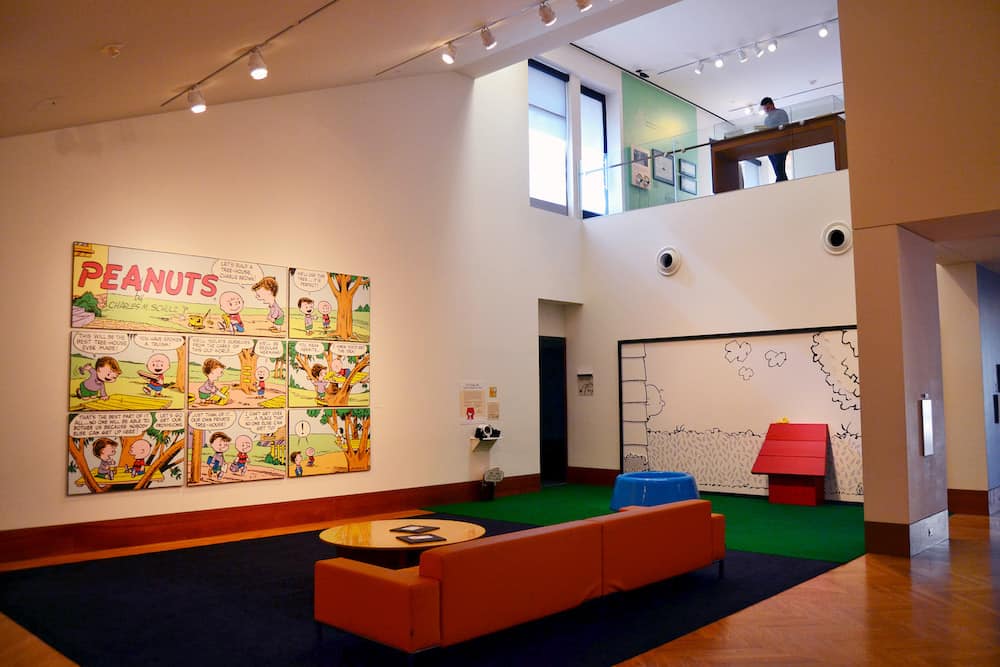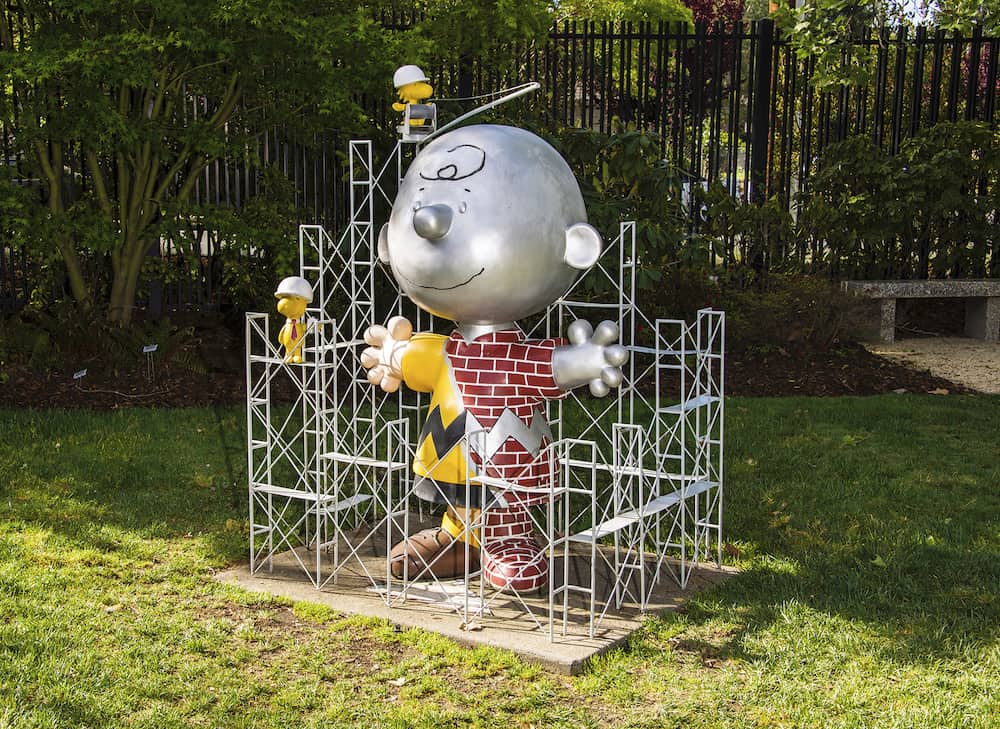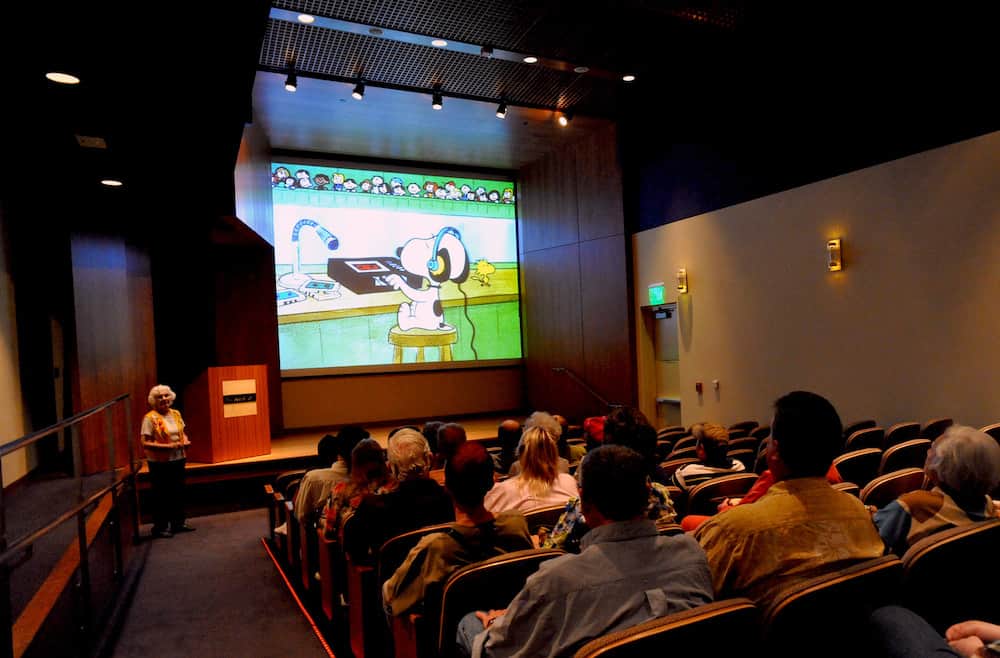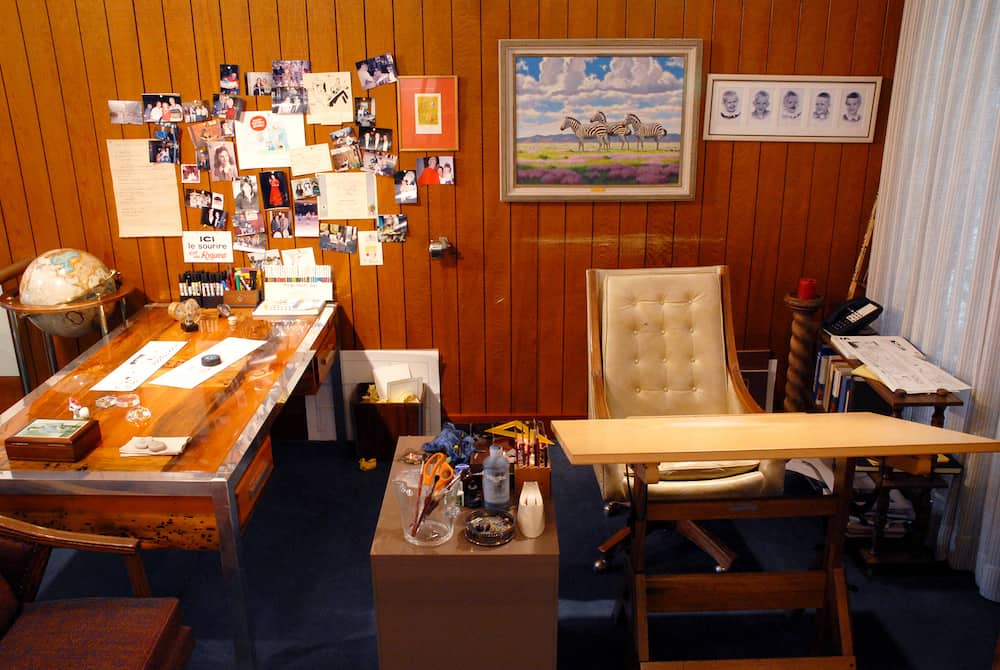The museum is dedicated to an exploration of the artist’s life and work.

Blooloop spoke to the museum’s Director, Karen Johnson. She gave an insight into the legacy of the Peanuts comic strip as well as behind-the-scenes workings of the Charles M. Schulz Museum and Research Center.
A varied career
Johnson’s initial plan, as a History major, was to be a civil rights lawyer. However, taking care of a family member meant she couldn’t go to law school. Instead, she went into the non-profit world.
“I first started working with developmentally disabled children, something I loved,” says Johnson. “Then I had the opportunity to go to graduate school. I got into the Harvard Kennedy School with the joint program at the business school. I got a Masters in Public Administration.”
See also: The Peanuts brand: A truly global IP with a loyal worldwide fanbase / The McBride Company creates experiential dining concept ‘Peanuts Café’
Returning to Santa Rosa in the early 80s, she secured a job at a volunteer centre. “Jean Schulz was on the board. It was a wonderful organisation, very vital and alive, and I did that for 25 years. We worked really hard, taking the centre from $700,000 a year to $4.8 million.”
At the age of fifty, Johnson changed tack. She decided to fulfil a long-held dream of going back to New York City to become a starving artist.
“I went back to New York, and I really was a starving artist,” she says. “It literally came true. So I finally got a job and I lived down there West Side for a while. I loved it.”
The Charles M. Schulz Museum
“The Schulz museum opened the day I left for New York City,” says Johnson. “Jeannie [Schulz] and I have always been friends, so we kept in touch.”
Around two years after the museum opened, it was in need of a new director. Jean Schulz called Johnson. “She said, ‘Would you come home and run the museum for me?’ So I left New York City.”

Johnson will have been the director of the Charles M. Schulz Museum for fifteen years in October.
“In all honesty, Jeannie needed to have someone she knew,” says Johnson. “This was her husband. And while his legacy is massive, the institution only has 28 staff. So it’s intimate, and she’s very involved, so it has worked out well.”
For Johnson, it was the ideal job. Not only because of her friendship with Jean Schulz but because she had been an ardent Peanuts fan since childhood.
“I was the little girl who in 6th grade clipped out every little daily and put it in my shoebox. I would go a sit on the floor in my bedroom at night and sit there and read them and laugh. And I’ve got red hair, so when the red-headed girl theme came up I was like ‘no one acknowledges red hair! The redhead is the hero, the one he’s seeking?!’”
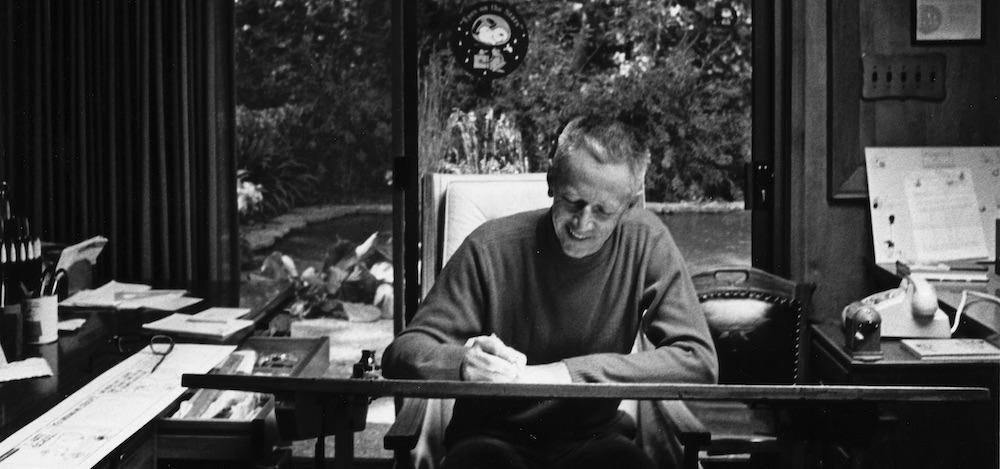
Commemorating Charles Schulz
The concept of a museum to commemorate the work of Charles M. Schulz [‘Sparky’] was in the pipeline for a while. It began in the 1990s, before his death. Johnson says:
“Jeannie is a very bright, articulate woman. She started saying to Sparky in the mid-nineties: ‘We need to build a museum.’”
Initially, he refused. “But then we talked to him about the fact, and this is very important, that the museum wouldn’t be about Peanuts. Charles M. Schulz, the artist who gave us the characters, and his biography, would be the focus.
“That interested him because he so loved his cartooning and drawing, the ink and the line. And he was curious about the creative process. I always tell people, ‘you’ll meet the characters. But you’ll meet them along the way through Charles M. Schulz’s biography.’
“People love that.”
Staying connected
Charles M. Schulz didn’t live long enough to see the ground broken for the museum.
“We have a huge finance office, and it is right next to a shower,” says Johnson. “It was going to be Charles’ office. So often, he would have to leave in the evening to go to a function. The idea was that he would be able to shower, put on his tuxedo and leave as needed, and is why it’s structured like that. I love these little anecdotal things that stay connected to him in the tiniest of ways.”
The Schulz museum’s responsibility, Johnson says, is to tell the story of the artist and the art.
“Our museum is different from a standard museum of art. I’m an art fanatic. I’ll travel to see Pollok, and Warhol, and Georgia O’Keefe, but this art is personal: everybody has a Snoopy story. Everybody’s little brother was Linus, or ‘I finally saw myself in Lucy’. So, a visit is about not only coming to see Peanuts and to learn about Charles M. Schulz, but it’s to do with personal history. That is what I think makes it different.
“When I go to a Matisse exhibit, I’m overwhelmed with the talent, the vision, the sheer ability demonstrated in what he did, and what he saw. It is all about admiration of the art.
“But Peanuts is personal and that’s what makes this museum unique.”
The research centre
The architecture reflects Schulz’s graphic style. “It was built to reflect his art elements,” says Johnson. “A lot of open space, the black line and the four squares. It impresses people right away.
“We always start out exhibits with an element of his biography. We give the context in which this art that is so personal to people was first created.”
The research centre that is part of the Schulz museum was Jean Schulz’s idea. “Most museums open with their art department. Then they try and build on all the anecdotal history, like letters from Matisse, for example.
Here, the research centre holds all of Sparky’s correspondence. As well as his family photographs and all his books. So, when our exhibit team is looking at the strips and themes, they can go into the research centre. They can find the supporting biographical elements: ‘oh, here’s why Lucy did that at that time’, or the oral history of Donna Wold [the real-life inspiration for the Little Red-Haired Girl].
“It’s all a resource for people writing books, too.”
Diversity and authenticity
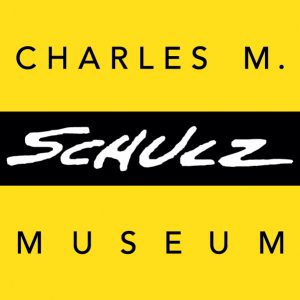 On July 31, 1968, Charles M. Schulz introduced the first African American character, Franklin, in the Peanuts strip.
On July 31, 1968, Charles M. Schulz introduced the first African American character, Franklin, in the Peanuts strip.
Famously, this was the result of a letter written to Schulz by Harriet Glickman. The Californian teacher contacted him in the wake of Martin Luther King Jr.’s assassination on April 4th 1968.
Glickman’s idea was that the inclusion of an African American in the strip would be helpful. She thought it would have a positive effect, subconsciously, on children’s attitudes.
“He did it in a way that was authentic to himself,” says Johnson. “He wasn’t cavalier, he wasn’t disrespectful, and he wasn’t placating. In fact, he actually told Harriet Glickman the first time: ‘no, I don’t think I can do it. I don’t know how to introduce a character in a respectful way that isn’t placating.’
Finally, he figured out a way that he could introduce Franklin in a way that was authentic to him. And it was authentic to a Charlie Brown story as well. That was why Franklin and Charlie Brown met on the beach with the beach ball. They then talked about their grandfathers being in the Vietnam war.
“That was the beginning. He was a genius in his simple way of expressing emotion so that you would laugh at yourself, basically. “
Reaching new audiences
International tourists make up a large proportion of the visitor numbers. Many coming from Japan and China. “We also get a lot of Europeans, though not as many as we’d like,” says Johnson.
“Before the fires in California, we had just hit ninety-nine thousand, nine hundred and something. In a way, as I told our marketing director, that’s better than reaching a hundred thousand. Because this is like a Charlie Brown moment: 99978, or whatever it is, that’s just so Charlie Brown.
“After the fires, though, which affected everyone, we’re beginning to pull back up.”
The Charles M. Schulz museum changes exhibitions regularly to keep the museum fresh. “Our main gallery changes every six months,” says Johnson. “This year it’s not changing, but I think it’s a very good formula we’re trying.”
Current affairs
“We try to stay current with what’s going on in the country, and we also respect Sparky’s timeline of history. Because of who he was, we have been able to do some of the most amazing exhibitions. As an example, we did an exhibition themed around Apollo 10. Because, of course, Snoopy went to the moon.”
The Apollo 10′s lunar module went by the nickname Snoopy. It would ‘snoop’ around looking for a safe landing spot for Apollo 11. The command module – guardian to the lunar module, Snoopy – was nicknamed Charlie Brown.
“Gene Cernan, Tom Stafford, the Navy SEALs and all the helicopter pilots came for a whole weekend. And during the presidential elections, our exhibition was ‘Mr. Schulz Goes to Washington.’”
Peace, Love and Woodstock
As a general rule, the exhibition in the main gallery changes every six months. This year is an exception. The current exhibition, Peace, Love, and Woodstock, opened on March 17, 2019, to commemorate the music festival’s 50th anniversary. It will run until March 8 2020, due to the plethora of material. And also because of the popularity of Woodstock’s character, Snoopy’s eccentric bird-companion.
“We’re going to leave up Woodstock all year, but we’re changing out the strips every six months. So we’ll say to people, ‘come back for part two. There are so many more stories about Woodstock in his nest; more stories about Woodstock and his beagle scout troop’.”
The girls of Peanuts
After the Woodstock exhibition closes next year, the next will centre on Lucy, and the girls of Peanuts. “We’re planning sports sections, leadership sections, science and the arts,” says Johnson.
“I am very excited about the year of Lucy and the girls in 2020, and what we’re going to do around that. We are not political, nor should we be, but this is about voting and participating in our democracy. That’s the bigger picture of it, but there’s some great stuff with Lucy. There’s one piece where she’s angry about something and she screams ‘Speak out!’.
“He always provides us with timely and current stuff because his work is universal.”
“I have one strip that I’ve cut out and have had for probably 60 years. Charlie Brown and Linus are hanging on the wall, woebegone. Linus is saying to Charlie Brown, ‘Shakespeare said that life is a stage and every actor has a role to play’ or something. The last panel is Charlie Brown saying ‘I must have missed some dress rehearsals’. I love that! Especially as I age.”
Technology in the Charles M. Schulz museum
The Schulz museum keeps technology to a minimum. “We use technology in our oral histories,” says Johson. “We also have interactives where people can be photographed as if they’re the Flying Ace from the Peanuts strips. There are a couple of tablets which let guests have a go at animation, but beyond that, we keep it simple.
“Jean Schulz doesn’t like technology. She says: ‘Sparky had his heart, pen and paper in his hand. That was it.’”
Future plans
Plans for the immediate future include an education building. “When Mrs Schulz built the museum she included an education room. It’s right next to the research centre, so people could come in, and draw.
“Our education department has been growing, and the public program has expanded. Sometimes the visitors can’t get into the education room because we’re having workshops.
“So we decided on a purpose-built education. It is beautiful and will open in the fall. We will be able to expand our outreach to schools. We want to reach to all those from children to young adults who want to come and learn about graphic novelling.”
The real Snoopy
Charles M. Schulz, it turns out, never did have a beagle. However, Johnson says: “His childhood dog Spike was a cross between a hound and a hunting dog. He had black and white spots, which is where Snoopy gets his colour from.
“Spike was quite an adventurous animal. Sparky would say he would eat cats and drink coca-cola, and you could tell him to go down to the cellar and he’d bring a potato up.
“He loved his dog. But here’s the most beautiful part of this. Sparky always said he adored Spike. But we interviewed Shermy, Sparky’s best friend from the time he was 12 years old, who was about 97 at the time we talked to him. He said: ‘What’s this about Spike?’
“He put his hand up and his thumb down, and said ‘No-one liked Spike! I’d knock on the door and hear him barking…He wasn’t nice to us. We were all afraid of Spike!’ Isn’t that darling?”
Finally, Johnson says, “The kernel of all the exhibitions is the biography of Charles M. Schulz. As he said, ‘to know me is to read the strips, I put everything I am in the strips.”
All images kind courtesy of the Charles M. Schulz Museum.
